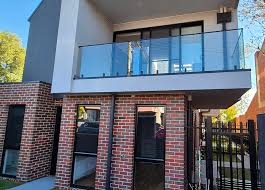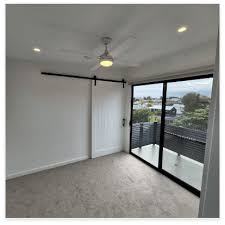
building process https://www.prevailinghomes.com.au/our-process/
The building process transforms an idea into a physical structure. Whether you are erecting a single-family home, expanding a commercial facility, or renovating an existing property, the process follows a logical sequence of stages that manage risk, control cost, and ensure quality. Understanding the key phases and the roles of everyone involved helps owners, designers, contractors and stakeholders collaborate successfully from concept to completion.
1. Project inception and brief: Every building project starts with a clear brief. This is where goals, budget, timeline, site constraints, functional requirements and desired performance outcomes are defined. Good briefs balance ambition and realism; they also identify priorities such as sustainability, accessibility, or long-term maintenance considerations. Early stakeholder engagement — including owners, potential users and advisors — reduces the risk of costly changes later.
2. Feasibility and site assessment: Before design work proceeds, the site must be evaluated. Feasibility studies examine zoning and planning restrictions, geotechnical conditions, services availability, environmental constraints, and site access. These investigations inform preliminary cost estimates and shape design responses. At this stage it is typical to engage surveyors, geotechnical engineers and planning consultants to collect reliable data.
3. Schematic design and concept development: Designers translate the brief into sketches and concept models that explore spatial organization, massing, orientation and circulation. Schematic design balances aesthetics, functionality and buildability while considering natural light, energy performance and user experience. High-level cost planning accompanies this work to ensure the concept aligns with budget expectations.
4. Design development and documentation: As the project advances, the design is refined and technical documentation is produced. Architectural drawings, structural calculations, mechanical and electrical systems layouts, and specification documents define materials, tolerances and construction methods. Accurate documentation is essential for tendering, obtaining permits and guiding on-site work. Integrating specialists early — structural, MEP, landscape and sustainability consultants — reduces coordination issues.
5. Permitting and approvals: Regulatory approvals vary by jurisdiction but typically include planning permission, building permits and various compliance checks. Submitting complete, coordinated documentation expedites approvals. Navigating local codes, heritage overlays or environmental regulations requires patience and often benefits from a local consultant experienced with authorities. Approvals can significantly affect schedule and cost, so build contingency into the program.
6. Procurement and contractor selection: Choosing the right delivery method—design-bid-build, design-build, construction management or negotiated contract—affects risk allocation and timeline. Competitive tendering helps establish pricing certainty, while negotiated or integrated approaches can encourage collaboration and innovation. Evaluate contractors on experience, financial stability, health and safety records and past performance on similar projects.
7. Site preparation and foundation works: Construction begins with site mobilisation: erosion control, temporary services, fencing and worker facilities. Groundworks and foundations respond to geotechnical conditions and structural loads. Quality control during excavation, formwork and concrete pours is critical; poor foundation work is costly to rectify. Coordination between site management and designers ensures that unforeseen ground conditions are addressed promptly.

8. Superstructure and envelope: Once foundations are in place, the superstructure—frames, floors and roof—follows. The building envelope (walls, windows, roof) must deliver structural integrity, weatherproofing and thermal performance. Attention to detailing at junctions prevents common defects such as water ingress and thermal bridges. Prefabrication and modular elements can accelerate this phase and improve quality control.
9. Building services and fit-out: Mechanical, electrical and plumbing systems are installed in parallel with internal partitions and finishes. Early coordination of services reduces clashes and rework. Commissioning of HVAC, electrical distribution, fire protection and security systems is essential to verify performance against design intent. Interior fit-out, fixtures and finishes complete the user environment and require careful inspection to ensure standards are met.
10. Quality assurance, testing and inspections: Throughout construction, quality assurance processes verify compliance with specifications and codes. Regular inspections, testing of materials and systems, and documented sign-offs create a record of conformity. Defect lists compiled during practical completion guide final remedial work. Robust site supervision and independent inspections reduce the risk of latent defects after handover.
11. Health, safety and environmental management: Safety protocols protect workers and the public. A comprehensive health and safety plan addresses site induction, protective equipment, emergency procedures and contractor coordination. Environmental controls—waste management, erosion control, noise mitigation and emissions reduction—minimize the project’s footprint. Sustainable procurement and waste reduction strategies contribute to long-term sustainability goals.
12. Cost control and schedule management: Effective project management tracks cost and time against approved baselines. Regular reporting and trend analysis allow early corrective actions. Change management procedures govern scope changes, valuations and approvals so that cost escalation and delays are managed transparently. Risk registers identify potential issues and allocate mitigation responsibilities.
13. Commissioning and handover: Commissioning verifies that building systems function together as intended. Training for operations staff, provision of operation and maintenance manuals, and completion of as-built documentation facilitate a smooth handover. A systematic defects liability period allows issues that arise in initial occupation to be fixed under warranty.
14. Post-occupancy evaluation and lessons learned: After occupancy, monitoring actual performance against design targets reveals opportunities for improvement. Post-occupancy evaluations assess energy use, occupant satisfaction and maintenance challenges. Lessons learned inform future projects, leading to incremental improvements in design, procurement and construction practices.
15. Embracing innovation and sustainability: Modern building processes increasingly emphasize sustainability, resilience and adaptability. Passive design strategies, renewable energy integration, material lifecycle assessment and circular economy principles reduce environmental impact. Digital tools—BIM, 3D modelling, reality capture and project management platforms—improve coordination, reduce errors and enable better decision-making throughout the project lifecycle.
The building process is a sequence of interlinked phases that require clear objectives, disciplined management and collaborative teams. Success depends on early planning, rigorous documentation, proactive communication and a commitment to quality and safety. By understanding and respecting each stage, project teams can deliver buildings that meet client needs, perform reliably and contribute positively to their communities.

